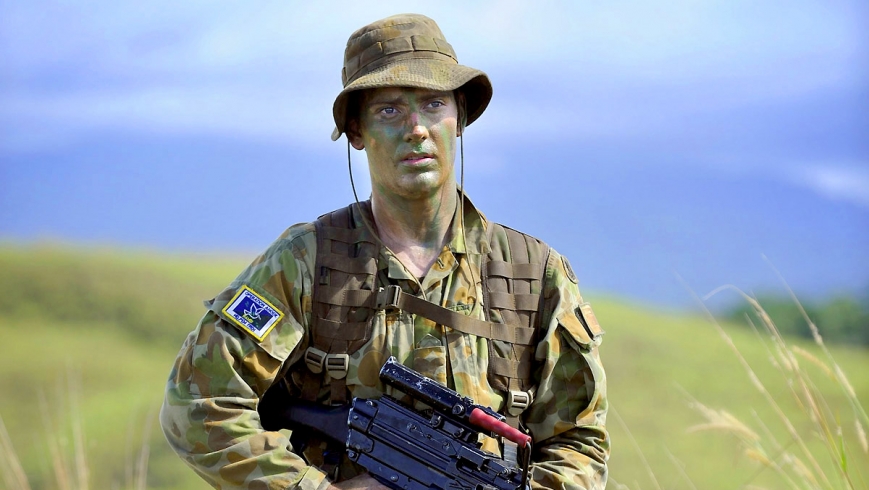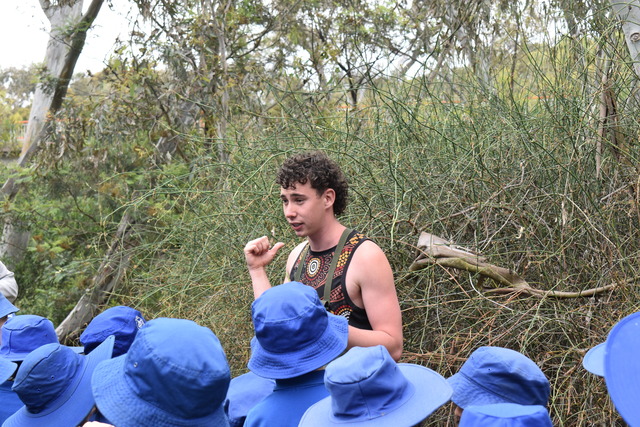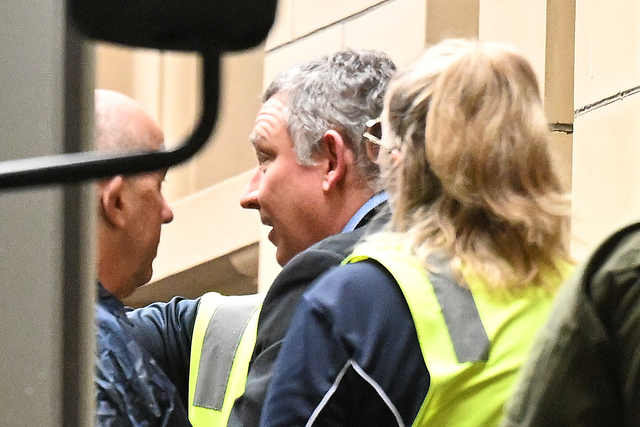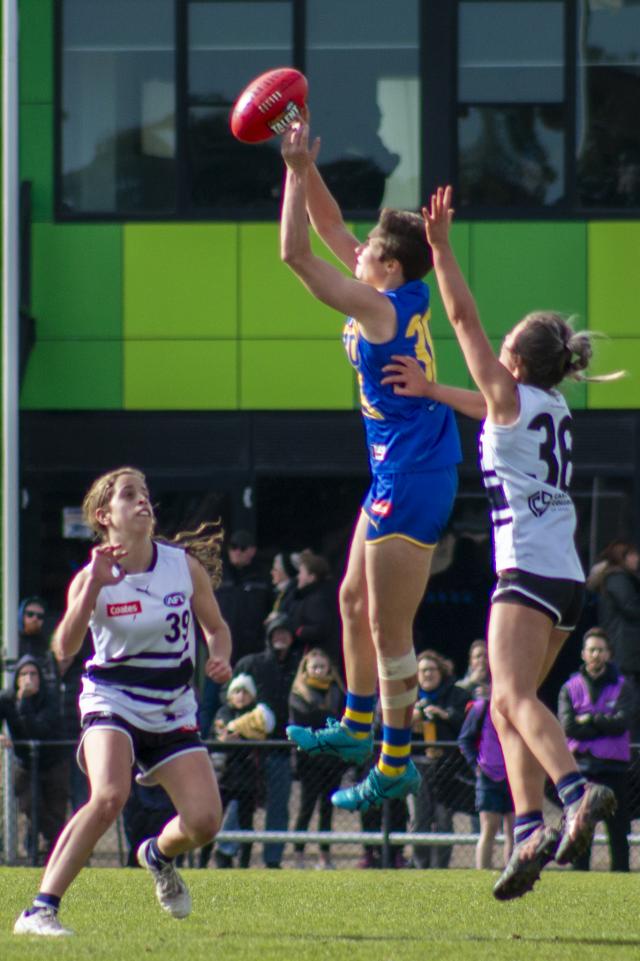Beau Donelly joins a group of bosses and their defence reservist employees during a training misssion in the Solomon Islands.
THE call came in just before 3pm. A mob had attacked a politician after the car he was travelling in struck and killed a child in downtown Honiara, capital of the Solomon Islands.
Rioters had taken the main street on the island of Guadalcanal, setting up road blocks out of scrap metal and car tyres. The violence escalated quickly; one person was already dead, others were seriously injured.
On the east side of the island, Australian soldiers from Combined Task Force 635 were deployed to end the unrest. But the chaos worsened as the two sides faced off in what was to be a bloody battle.
The blades of a helicopter circling overhead beat against the thick island air as the mob chanted to the thud of petrol can drums. Determined to hold their ground, rioters hurled missiles at the platoon.
Soldiers hit back, moving swiftly against the enemy in synchronised formation and firing tear gas into the crowd. Within minutes the platoon had breached the barricades, dispersed the mob and restored order.
And, as quickly as it began, the training exercise was over. Soldiers lowered their weapons, caught their breath and peeled off their body armour. The wounded rioters bounced up, brushed themselves off and headed back to their quarters.
Welcome to Guadalcanal Beach Resort, a converted army base in the middle of the Solomon Islands jungle where Operation ANODE – the Australian Defence Force’s contribution to the Regional Assistance Mission to the Solomon Islands (RAMSI) – has been run for the past decade.
The soldiers who took part in the riot drill were among more than 100 Australian Army Reservists deployed in the region, among them students, tradesmen and regular army personnel who have taken leave after serving in East Timor and Afghanistan.
This is where the ordinary men and woman of the reserves come to sharpen their skills; from guerrilla ambushes to weapons training, they face a range of unpredictable situations during their four-month deployment.
This month they demonstrated the skills they gained from reserve military service to their day-job employers, who had flown from Australia to take part in Exercise Boss Lift. The five-day program was designed to give the bosses a deeper understanding of the roles reservists play on deployment.
“It provides an opportunity for us to take employers of reserve soldiers into the field to visit their reservist employees,” said ADF reserve and employer support director Ian Flawith, who headed the tour.
“Without employers who are prepared to release their reservists, we can have difficulties . . . we realise it imposes on business, which is why we need to have a good relationship with them. Through the program, employers pick up a good understanding of what their employees do and the skills and training they’ll take back to the civilian workforce.”
The estimated 45,000 reservists who volunteer for part-time service in the Australian army, navy and air force were once referred to as “weekend warriors” or “SAS” soldiers – Saturdays and Sundays.
But in recent years they have served overseas, and since 2007 have been deployed in the Solomon Islands, Afghanistan, East Timor, Malaysia, Pakistan, Thailand, Rwanda and Somalia. Their employers, who must release reservists for service by law, are compensated $1400 a week while their employees are away.
This month’s Boss Lift tour was the last of three carried out each year to the Solomon Islands. The ADF pulls out of the region next month.
Among the 27 predominantly Victorian employers who made the 3700-kilometre journey was a police commissioner, a senior university lecturer, a banking executive, a council chief executive and the head of a national business association.
The bosses watched real-time riot and ambush simulations, visited World War II memorials and toured the ADF’s base. After a detailed weapons demonstration, they also had the chance to test their marksmanship, firing F88 Austeyr rifles and F89 Minimi machine guns at a shooting range that backed onto the Coral Sea.
Among the bosses was Altona resident Tony Parks, director of Architecture HQ, who visited his employee, Jarrad Alston. Mr Parks said he was most impressed by Jarrad’s understanding of what he was doing and why it was important.
“If they don’t know the detail the ramifications are deadly,” he said. “What Jarrad is doing is serious business. I think the knowledge he has learnt is critical and it’s got to be good for our office.”
Mr Parks said Jarrad stood out as the only reservist in his company of 16 employees, and the reservist experience had demonstrated Jarrad’s ability to take on more responsibility.
“I think Jarrad wants to do more and I think he’s ready for another challenge,” he said. “Our firm works overseas and there’s exciting stuff for us to do. I think Jarrad will ask for more and I’d be happy to give it to him.”
This is Private Alston’s first deployment since joining the reserves two years ago. He credited his boss with allowing him the freedom to achieve his personal goals.
“Tony’s been very supportive,” he said. “This has been a great chance to show him what I’m doing over here. It’s something that’s difficult to explain, so to show him first hand is great.”
Beau Donelly travelled courtesy of the Australian Defence Force.







